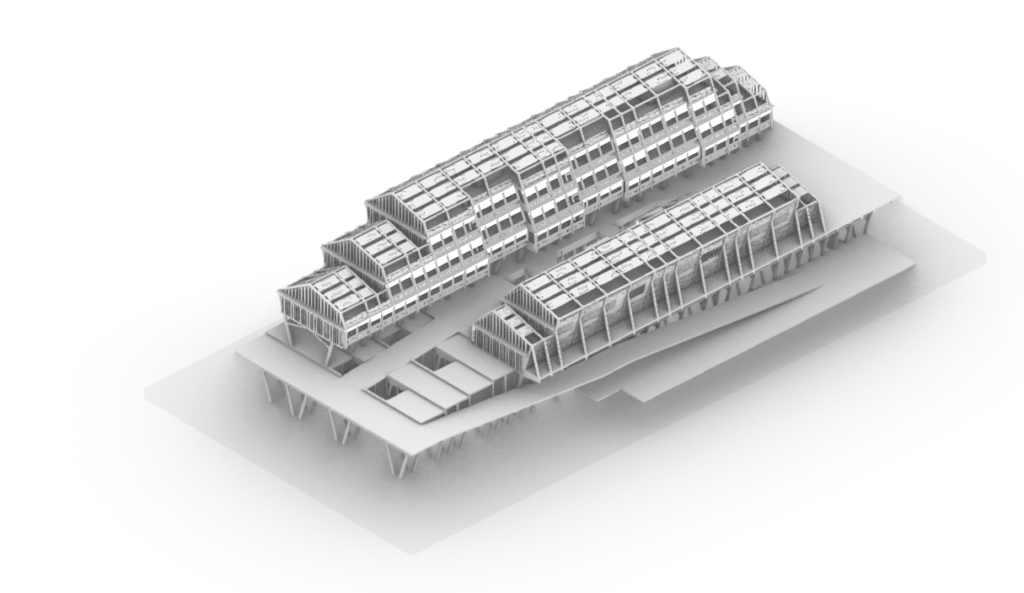
THERMAL QUESTIONS:
1] Ideal percentage of SW glazing?
2] Can single glazing be used to reduce cost, or are energy losses too great?
3] Ideal thickness of cork bricks for insulation?
4] Ideal length of horizontal shading?
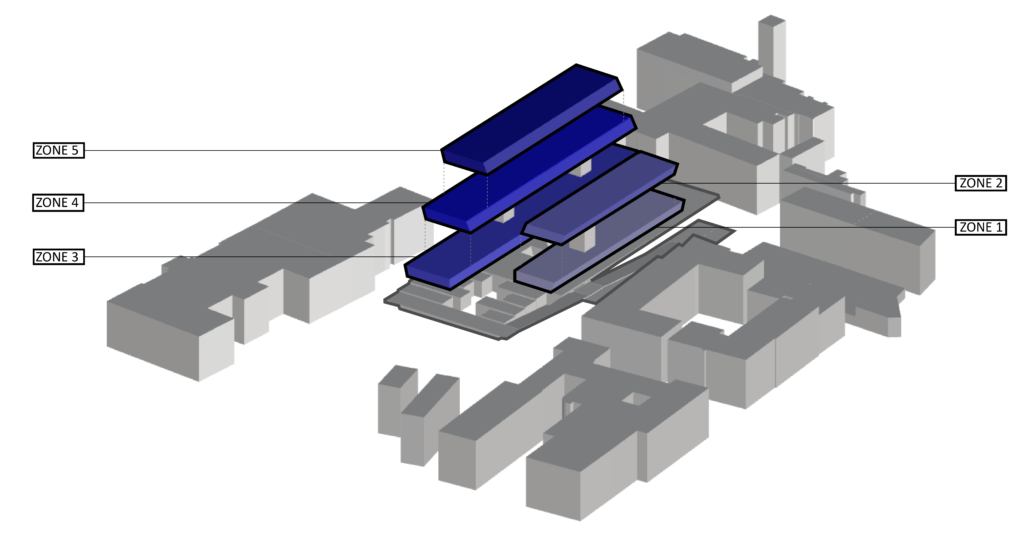
In order to simplify the analysis, only the residential floors were chosen. To conduct the sensitivity studies, the top residential floor (zone 5) was isolated.
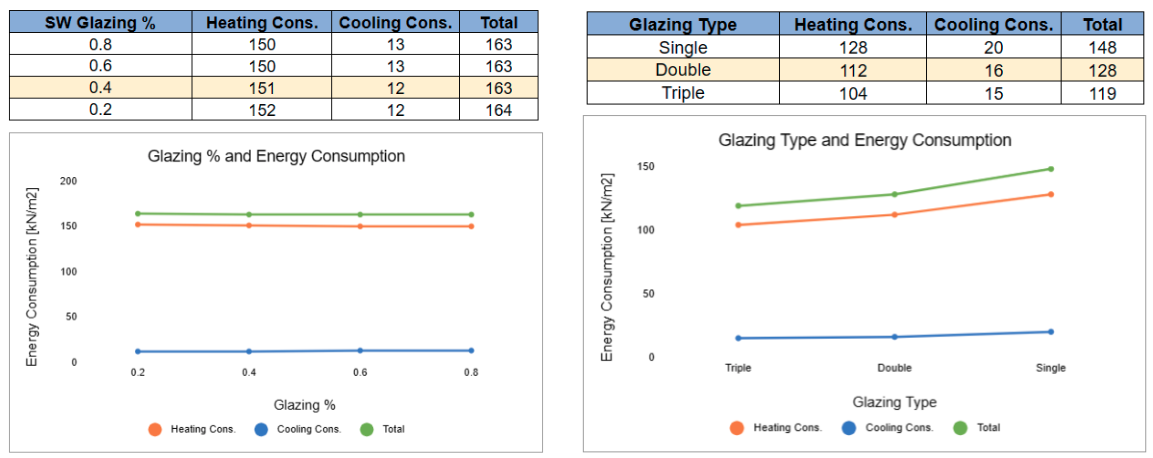
The SW glazing did not seem to affect the thermal loading. Reasons for this may be due to the small area of the SW facade in comparison to the larger areas of the SE and NW facades. Percentages of glazing for the SE and NW facades have already been determined considering architectural quality of the internal spaces, therefore it was desirable to see if the SW facade glazing could be optimized in relation to the thermal loading. Forty percent glazing is chosen for the SW facade, although a larger percentage could have been chosen with no major change to the thermal loading.
The study shows a significant savings in glazing type from single to double, and a less significant change from double to triple. Double glazing is chosen in order to balance energy savings with cost.
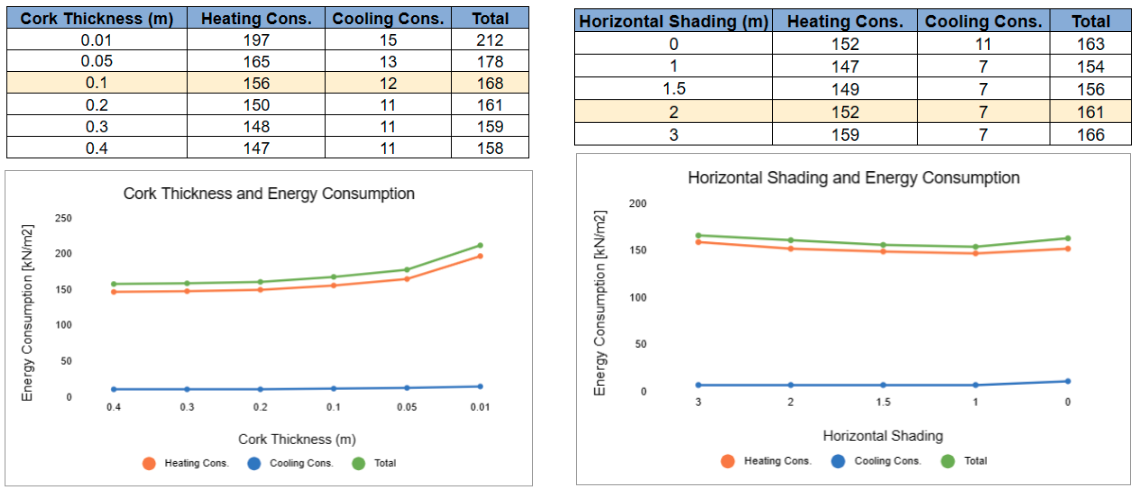
The thermal loading for the cork brick thickness starts to even out from 0.1-0.4 (m). The thickness of 0.1 m is chosen in part to fit more cohesively within the framing thickness of 0.25 m. The slight energy savings that could be had by choosing a thicker brick does not outweigh the design consideration of the thinner brick.
The horizontal shading length does not display a great impact on the thermal loading, although 1 m is seen to be the optimal length. Since the energy savings are minimal, 2 m is chosen in order to fit more cohesively with the current design of the residential floors.
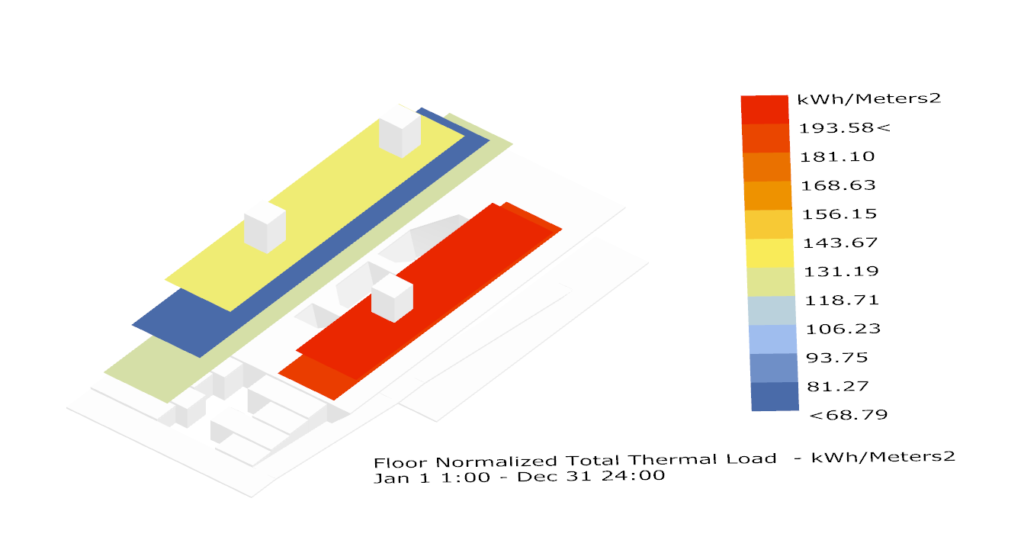

The most significant energy savings measures are shown to be double glazing and 0.1 m thick cork bricks.
A separate analyses of the building’s outdoor spaces, the plaza and roof terraces in particular, were conducted in order to gain a better understanding of the general comfort of these spaces. The analyses were done considering the hottest month, July, at midday. This month was chosen as it is the most extreme time of the year that these spaces will be used, assuming that there will be minimal usage of the spaces in the winter due to excessive cold temperatures.
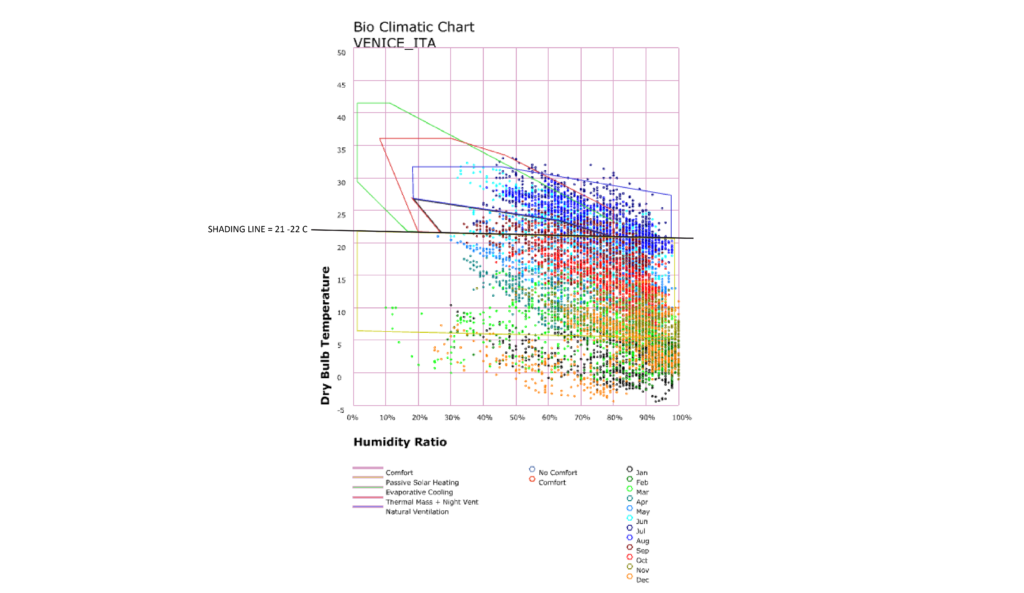
The bioclimatic chart shows the shading line to be around 21-22 degrees Celsius, meaning that general comfort will be near this temperature given there is adequate natural ventilation in the hotter months.
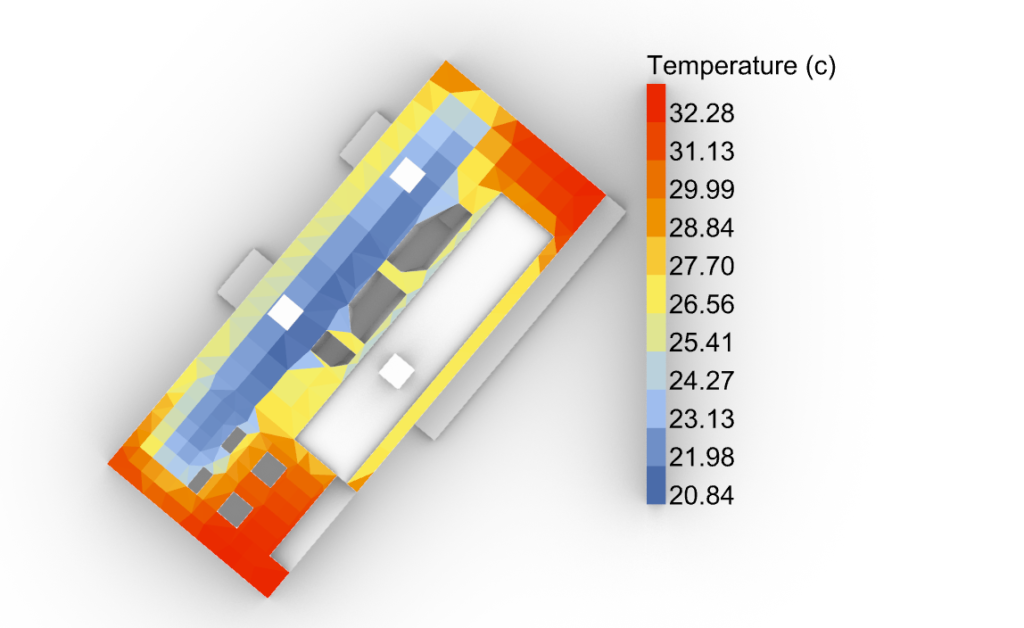
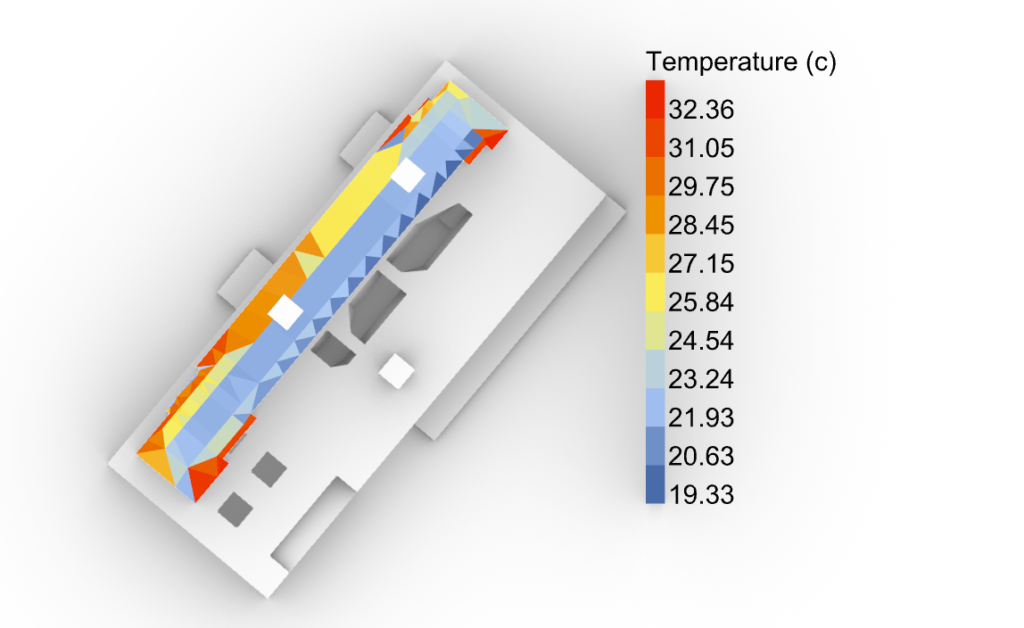
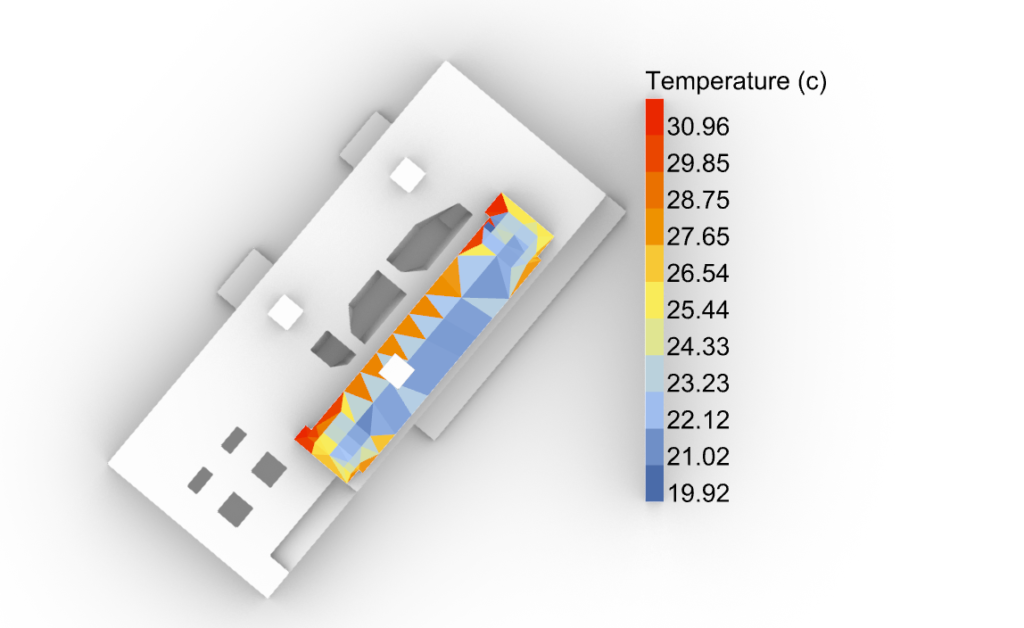
The analyses shows that the shading provided at the plaza and roof levels provides adequate shading to create comfortable spaces during the hottest months of the year. Although there are hotspots with less shading, these zones prove to be useful during the transitional seasons of the year of spring and fall, when greater solar exposure is needed to maintain comfort.

